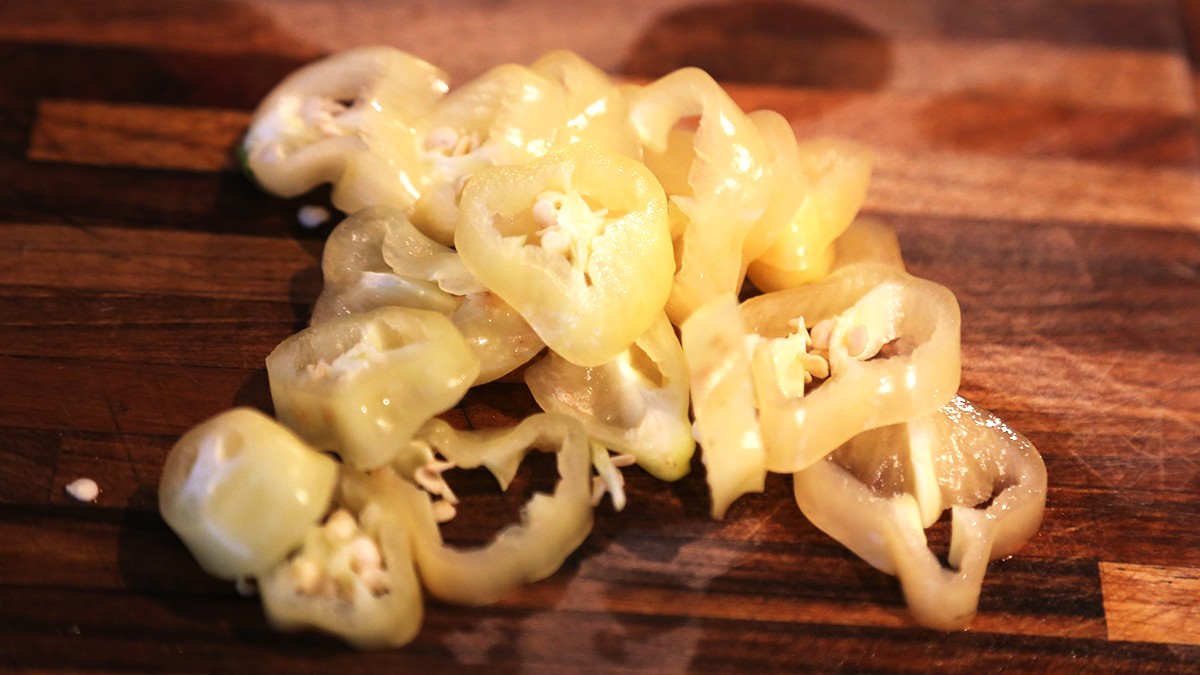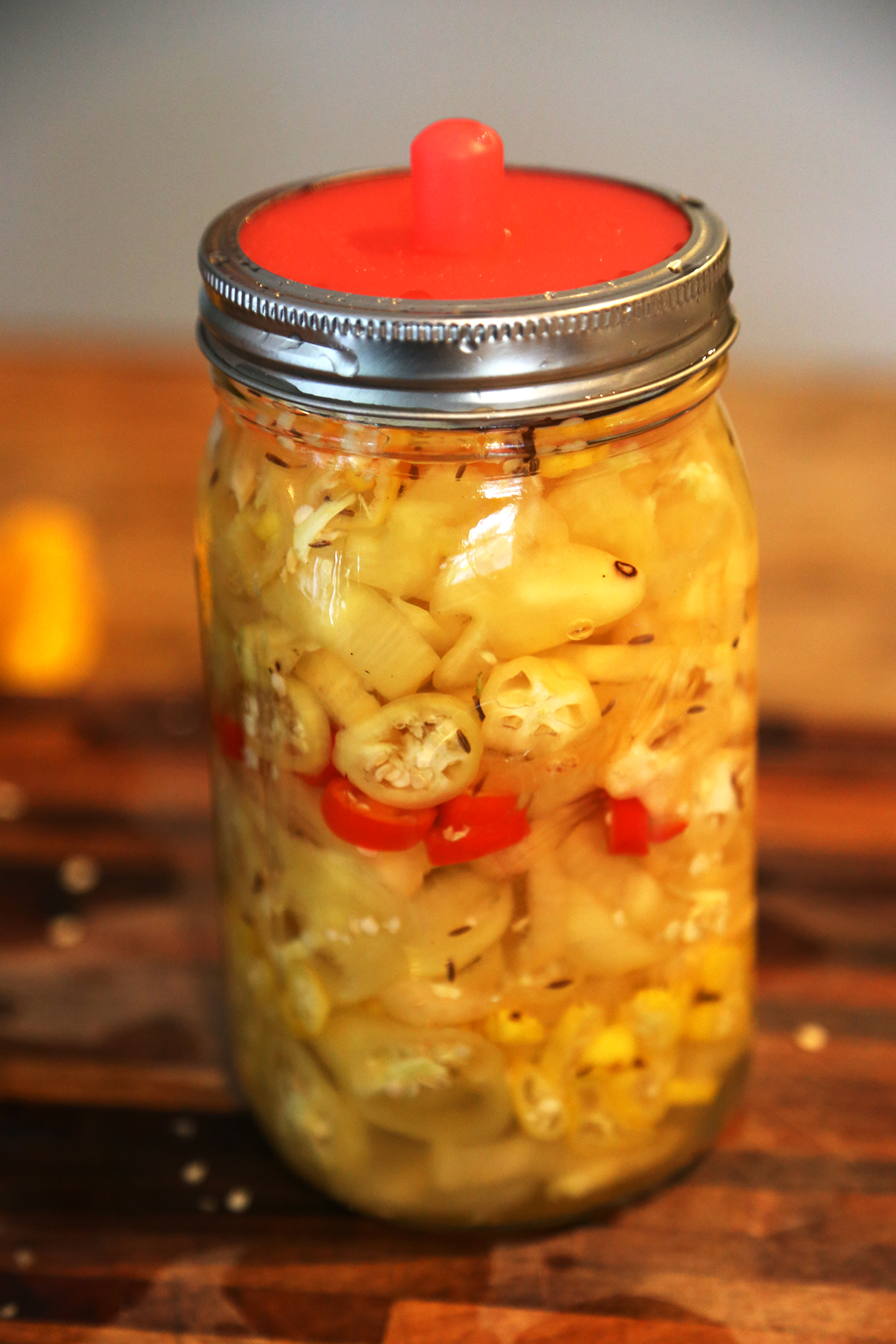Lacto Fermented Sugar Rush Peach Pepper Pickles
Rated 5.0 stars by 1 users
Category
Pickles, Pickled Peppers, Sandwich Toppers
Cuisine
American
Servings
20
Prep Time
20 minutes
For these pickles I have some specialized gear but I’ll offer some alternatives for those and you can easily make these at home. The pickles are a little sour but they retain their flavor and their crunch so that when you add them to anything later they are simply amazing. I grow these Sugar Rush Peach peppers. They are easy to grow, prolific pepper producers, and have a unique fruity flavor and a spice that is right up my alley. Think about as hot as a serrano chili, maybe a bit hotter. Reference materials claim 50,000 – 100,000 Scoville units where as a Serrano is from about 10,000 – 50,000 and a Jalapeño is 2,500 – 10,000 although I swear that some of the hottest experiences I’ve had were with jalapeños. But I digress. I know a lot of chili growers that ask all the time what to do with the Sugar Rush Peach peppers and so here is my preferred way to eat them. They just don’t hold up in a sauce as well as other chili peppers. You lose that crunch and that fruity sweetness that gives the Sugar Rush Peach pepper its name.
There are five steps to this recipe and four ingredients. Mother Nature takes care of all the hard bits.
Author:Jay Gleaton

Ingredients
-
Sugar Rush Peach Peppers
-
Whole Cumin Seeds
-
Filtered Water
-
Canning Salt or Sea Salt (not iodized salt)
Directions
Cut the peppers into rings. You can seed them if you want a bit milder pepper rings but I never do. Place the pepper rings artistically into the jar, or just cram them in.
Make a brine with that is 3-4% salt. You can measure this a few ways. 3 tbsp. of Salt with 1 qt. water. Or use 30 grams per liter of water i.e. 10 grams = 1% per L which is your ratio. If you have a ton of pickles to make just double or triple the recipe using the ratio. Put the salt in the water (filtered is best) and whisk until completely dissolved.
Add a pinch of whole cumin seeds to the jar for some extra flavor. (optional) You could also use pickling spice if you want which is a combination of a number of spices mixed together.
Pour the now room temperature brine over the pepper rings. Here comes the part where I have all the fancy gizmos. Put a glass fermentation weight on top of the peppers to hold them down. Add an airlock to the top of the jar and set somewhere you can keep an eye on it for a few days
Give the pickles at least 3 days and then start tasting them daily. The longer in the brine, the more sour they get. Put them in the fridge when you like them and they will last for 3-4 months. Leave them out and they will continue to sour, and sour, and sour, you get the picture. They will also get softer if you leave them out too long.

Recipe Note
Other things you can use in place of the gizmos:
For the weight…. a clean smooth rock, a cabbage core, a smaller jar that fits in the bigger one, a diakon radish? anyway the traditional methods of lacto fermentation (crocks, barrels, etc) require keeping the produce submerged under the brine in order to protect it from harmful bacteria that would otherwise damage the food.
For the airlock… You can use a silicone valve lid like I use, or there are fermentation airlocks that are pretty cheap, in a pinch you can just cover the top with a few layers of cheese cloth or seal the lid with a regular top and burp (open it to relieve pressure) it twice a day. If you forget to burp your sealed jar then KABOOM, you have a mess to clean up and no food.
During lacto-fermentation, sugars in the produce are eaten by lactobacillus bacteria which break down carbs into lactic acid and carbon dioxide. This creates an acidic, low-oxygen environment that encourages the growth of good bacteria and prevents the growth of other microorganisms.
Enjoy these on tacos, in salads, chop and mix them into your deviled eggs, add them to hot dogs, eat them with pizza.. you get the idea. Yum!

